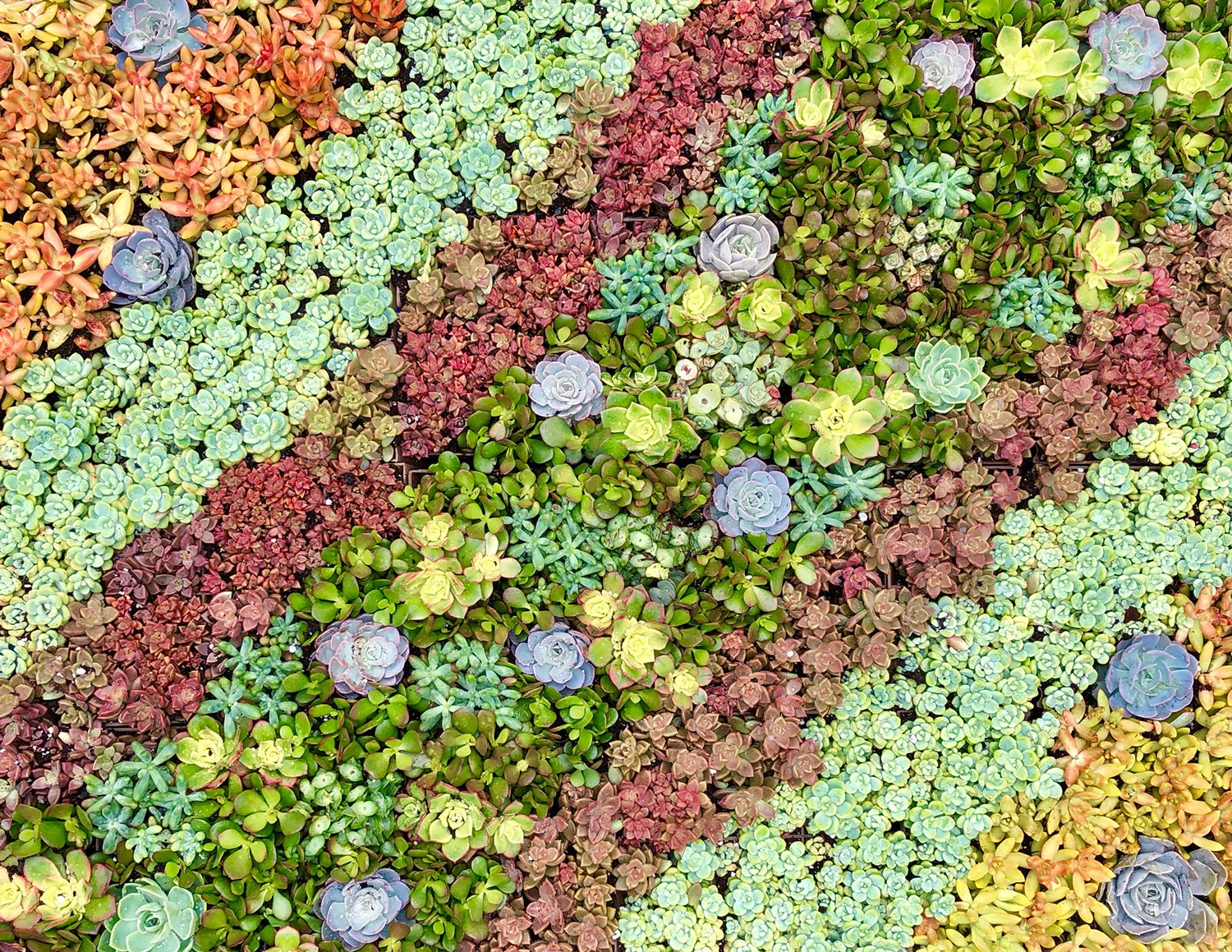In recent years living walls, also known as vertical gardens or green walls, have gained appeal in the built environment as a technique to improve the aesthetics of buildings and structures while also offering a slew of ecological benefits, particularly for pollinators and local biodiversity. Biodiversity, in short, represents the variety of all the different kinds of organisms, such as plants, animals, insects and microorganisms, that work cohesively to maintain and support life on Earth. Biodiversity exists and operates in a delicate balance, which is why the decisions we make as humans and how our decisions relate to biodiversity levels are utterly crucial to the longevity of life on Earth. Here is a deeper dive into living wall benefits and how incorporating living walls into our built environment offers a lifeline to many species.
What function does a living wall serve?
A living wall encourages biodiversity in many ways, while also aiding in the cleansing of the air we breathe, reducing the urban heat island effect, insulating buildings and providing a variety of benefits for the well-being of those who experience them. Living walls are a large part of the sustainable construction movement and what is growing in popularity as “green infrastructure”. This link has gained significant importance as we gain a deeper understanding of the inseparable link between how we design our environments and the effects those decisions have on the supporting web of life around us.
How a Living Wall Benefits a City
In the complex matrix of streets, avenues and roads of our modern cities, green spaces have become reduced to isolated pockets. These small and distanced pockets become difficult for species to navigate, especially for our small pollinators like bees and butterflies. Living walls serve as green stepping stones as they connect different habitats and allow for more fluid movement of species.
Attracting a Spectrum of Pollinators
Living walls can host a variety of plants tailored to specific urban settings and climates. When a diverse range of plants, especially flowering species, are incorporated into the design, they become magnets for pollinators. From bees to butterflies, and hummingbirds to beetles, these vertical gardens offer nectar, pollen, and shelter.
Enhancing Urban Biodiversity
One of the main advantages of exterior living walls is the concept of Biotecture. Beyond just pollinators, living walls provide essential nesting space, shelter, and food for birds and other insects, as well as increasing the biodiversity of a city’s vegetation. Within days of installation, living walls can become a resting place for bees and butterflies in a vertical landscape. They provide habitats for birds that seek out insects or nesting spots, and they can host many beneficial insects like ladybugs, which naturally keep pest populations in check.
Reducing the Urban Heat Island Effect
Cities tend to be hotter than their rural surroundings, a concept known as the urban heat island effect. This results when vegetation is replaced by concrete and asphalt for roads, buildings and all the other structures needed to accommodate growing populations. In short, these surfaces absorb, as opposed to reflect, incoming solar heat, thus leading to overall higher surface and ambient heat temperatures. This leads to a number of inefficient coping mechanisms, such as increased energy consumption for cooling. This energy more often than not is supplied via the burning of fossil fuels such as coal and natural gas, therefore leading to a higher level of air pollutants and greenhouse gas emissions (more on the urban heat island effect in a later post). In short, This temperature rise can be detrimental to many species and can reduce the number of pollinators. Living walls provide cooling through the process of evapotranspiration and through the covering of heat-absorbing materials, offering a more suitable microclimate for pollinators and other species to thrive.
Living Wall Benefits Extend Beyond Aesthetics
Living walls present a unique opportunity for education. They can be used as tools to teach communities and our future generations about the importance of pollinators, biodiversity, and the value of green spaces in urban areas. Engaging with the community can lead to more sustainable practices being incorporated into urban planning and design.
As cities around the world grapple with the dual challenges of urbanization and environmental preservation, innovative solutions like living walls offer hope. They prove that it’s possible to integrate nature into our built environments in a manner that is both functional, beautiful and beneficial to business. By promoting biodiversity and supporting pollinators, living walls showcase that sustainable urban design can go hand in hand with ecological responsibility.




